
The abyss refers to the deep ocean zones located beyond 2000 meters in depth. Pressure increases by about 1 atm every 10 meters, reaching several hundred atmospheres at 10,000 meters. The temperature is close to 2 to 4°C, sunlight is non-existent, and nutrients are scarce, making these environments extreme for life.
Abyssal organisms have developed unique strategies to survive these conditions: flexible body structures to withstand pressure, slow metabolisms to conserve energy, bioluminescence production for communication or attracting prey, and symbioses with chemosynthetic bacteria. Tube worms near hydrothermal vents exploit sulfide chemosynthesis, an energy source completely independent of the sun.
| Depth (m) | Pressure (atm) | Temperature (°C) | Typical organisms |
|---|---|---|---|
| 2000 - 4000 | 200 - 400 | 4 | Abyssal fish, jellyfish, crustaceans |
| 4000 - 6000 | 400 - 600 | 3 | Giant squid, sea cucumbers, amphipods |
| 6000 - 8000 | 600 - 800 | 2.5 | Deep abyssal fish, giant crabs |
| 8000 - 10,000 | 800 - 1000 | 2 | Tube worm, chemosynthetic bacteria, extreme abyssal fish |

The Atolla jellyfish is an iconic abyssal organism, often living at depths greater than 2000 meters. It is distinguished by its circular shape and its ability to produce powerful red bioluminescent pulses when threatened. This light signal attracts secondary predators towards its aggressors, a defense mechanism called a "light shield".
This jellyfish mainly feeds on small crustaceans and zooplankton, captured using its stinging filaments. Its bioluminescence also plays a role in communication and attraction in the total darkness of the deep sea. The Atolla perfectly illustrates the extreme adaptations necessary for life in the abyssal environment, where pressure is high, temperature is low, and light is almost non-existent.
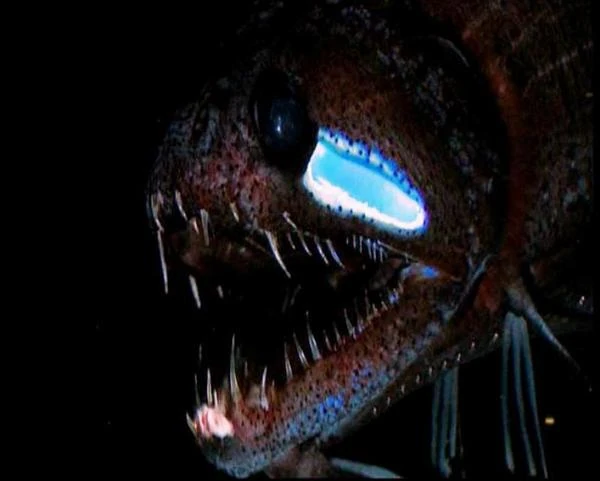
Idiacanthus atlanticus, commonly known as the dragonfish, is a remarkable abyssal fish due to its slender appearance and jaw lined with sharp teeth. It usually inhabits depths between 500 and 2000 meters, where sunlight is almost non-existent. Its bioluminescence, produced by photophores, allows it to attract prey and communicate in total darkness.
This predator is characterized by pronounced sexual dimorphism: females can reach 35 cm in length, while males remain much smaller and lack functional teeth. This strategy is typical of abyssal fish and reflects an extreme adaptation to a resource-poor environment.
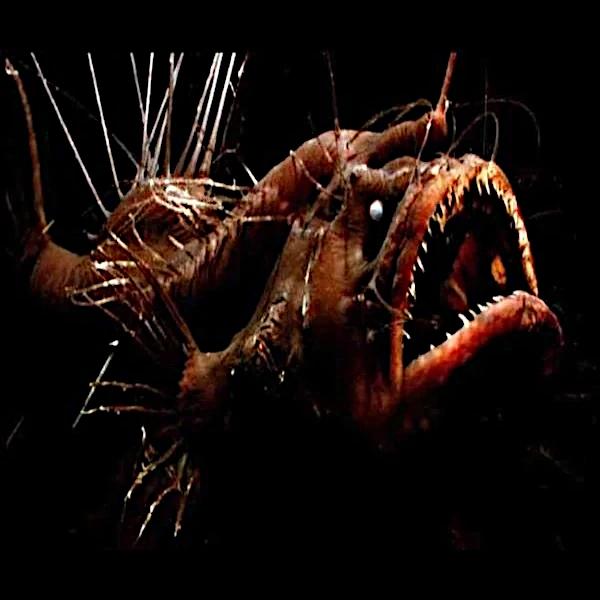
The Caulophryne, often called the abyssal anglerfish, is a deep-sea fish remarkably adapted to life in total darkness. It usually inhabits depths between 1000 and 3000 meters. Its head is topped with a bioluminescent illicium that acts as a lure to attract prey, and its jaw can open wide to swallow relatively large organisms in this food-scarce environment.
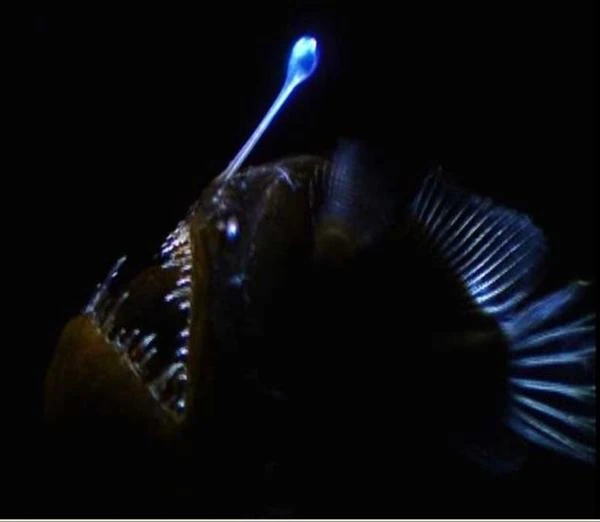
Melanocetus johnsonii, called the black seadevil, is a fascinating abyssal predator, easily recognizable by its massive head and its luminous appendage located above the jaw, called a lure. This bioluminescent lure attracts prey in the darkness of depths between 1000 and 3000 meters. Its stocky body and large mouth allow it to swallow prey almost as large as itself, making it a formidable hunter of the abyss.
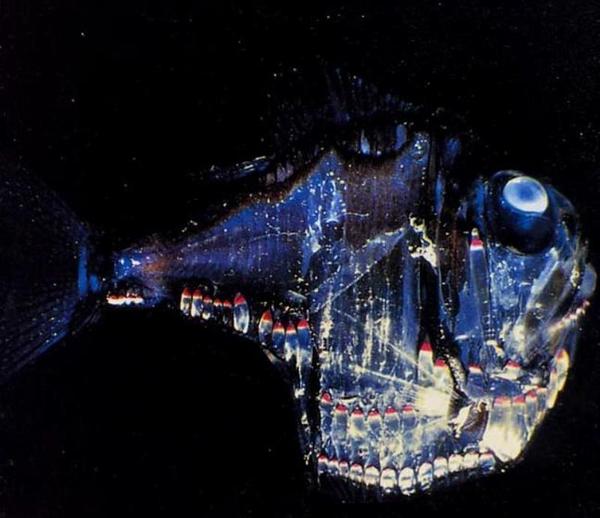
Argyropelecus hemigymnus, commonly known as the silver hatchetfish, is an abyssal fish recognizable by its flat, silvery body that reflects the faint surrounding light. It lives at depths between 200 and 1000 meters. Its flattened shape and photophores allow it to camouflage and communicate in the darkness of the abyss, while hunting small planktonic prey.
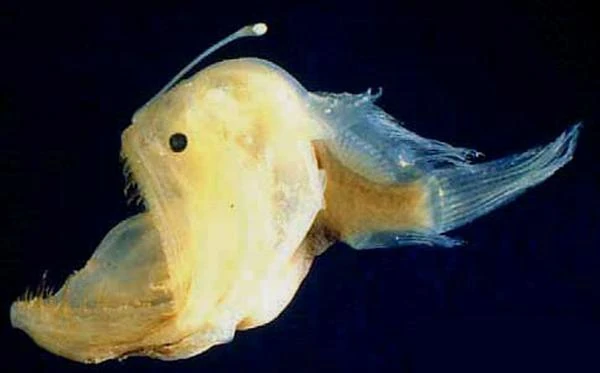
Myctophidae, commonly known as lanternfish, is a small abyssal fish characterized by its luminous photophores arranged along the body. It frequents depths ranging from 200 to 1000 meters and performs nocturnal vertical migrations to feed on plankton. Its bioluminescence serves both for hunting, avoiding predators, and communicating with its peers.
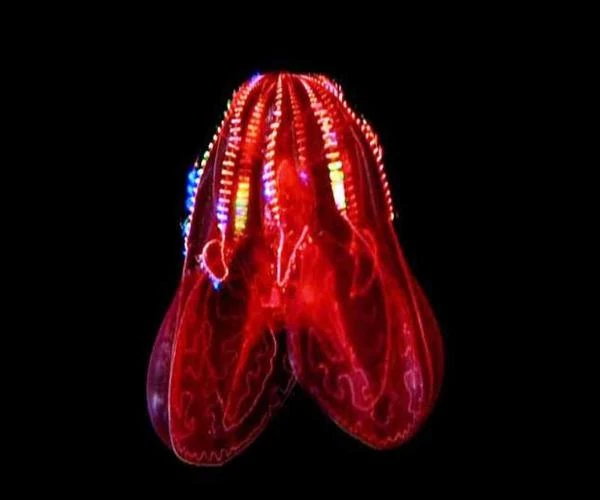
Bathocyroe fosteri, or red-bellied comb jelly, is a translucent gelatinous organism usually living between 400 and 2000 meters deep. Its red tint on the belly allows it to camouflage in the abyssal darkness, while its rows of vibrating cilia, called ctenes, allow it to move with great agility. This planktonic predator mainly feeds on small crustaceans and plays a key role in the trophic chain of the ocean depths.
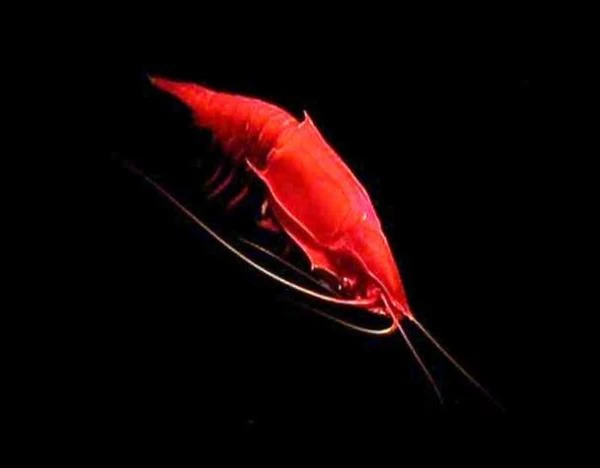
Lophogastrida, commonly called luminous squid, is an abyssal cephalopod that lives at depths ranging from 500 to 2000 meters. Its particularity is its ability to produce light through photophores located on its body, which allows it to communicate, camouflage itself through counter-illumination, and attract prey in the total darkness of the abyss.
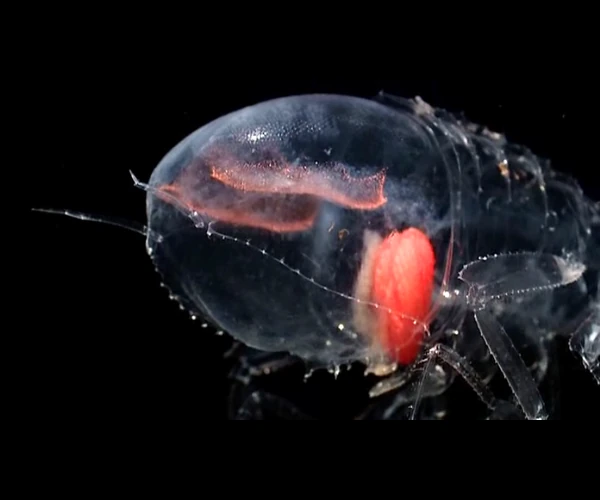
Phronima sp., transparent amphipod, is a fascinating abyssal crustacean due to its almost total transparency, which makes it almost invisible to its predators. It usually lives between 200 and 1000 meters deep and is distinguished by its particular behavior of digging capsules in which it transports its prey or eggs, thus ensuring the protection of its offspring in this hostile environment.
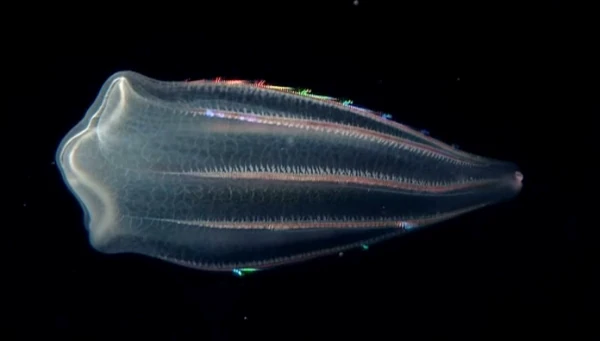
Atolla wyvillei, or transparent jellyfish, is an abyssal species characterized by its gelatinous and translucent body, which allows it to blend into the darkness of the ocean depths. It usually lives between 1000 and 4000 meters deep. Its bioluminescence, visible as flashes of light around its bell, serves to scare off predators and attract small prey.
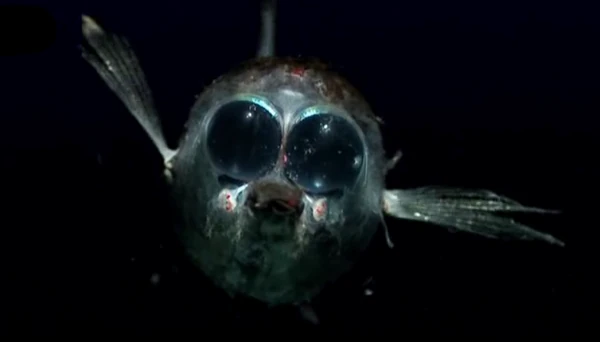
Winteria telescopa, or telescope fish, is a fascinating abyssal fish characterized by its globular eyes oriented upwards, adapted to detect the slightest glow from the surface. It mainly lives between 400 and 2500 meters deep. Its bioluminescence, concentrated around the head and sensory organs, allows it to spot prey and camouflage itself in the almost total darkness of the abyss.

Grimpoteuthis spp., nicknamed the Dumbo octopus because of its fins resembling Dumbo the elephant's ears, is an abyssal cephalopod usually living between 4000 and 7000 meters deep. Its lateral fins allow it to propel itself with great agility in the dense water of the abyss. It mainly feeds on crustaceans and small benthic organisms, using its arms equipped with suckers to capture prey in the almost total darkness.